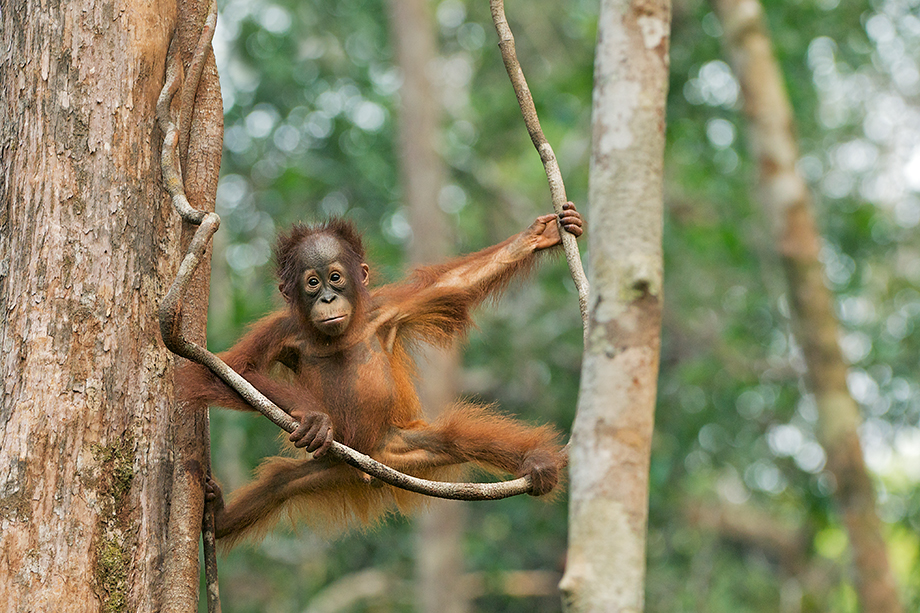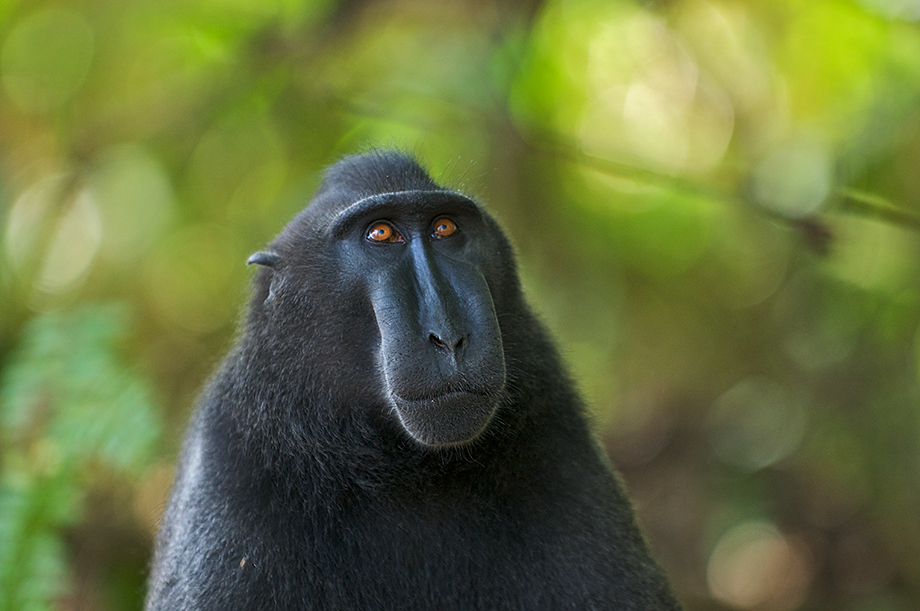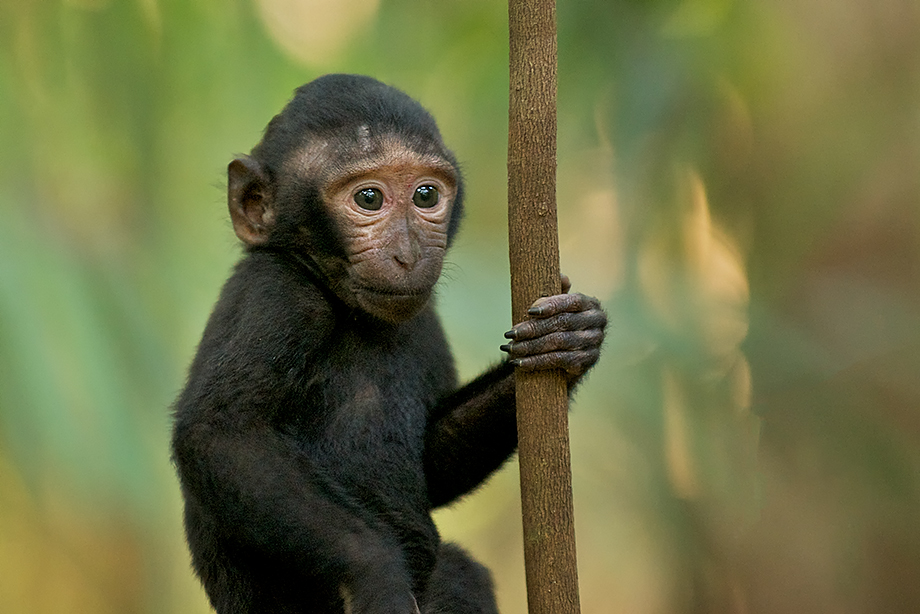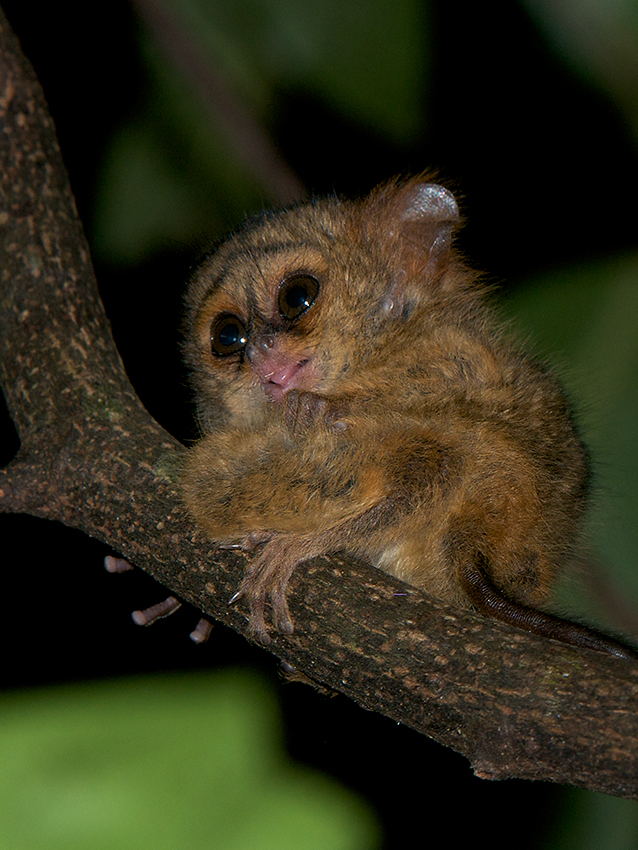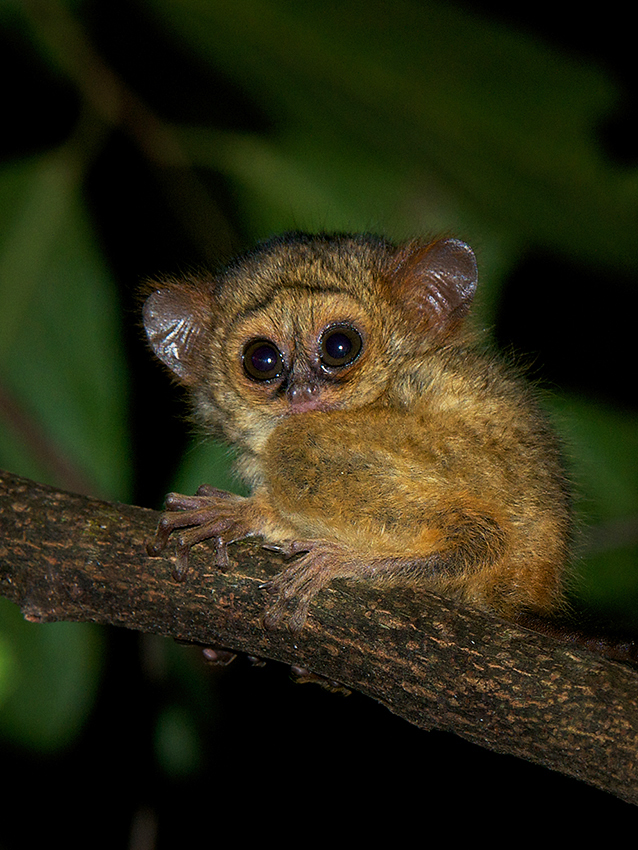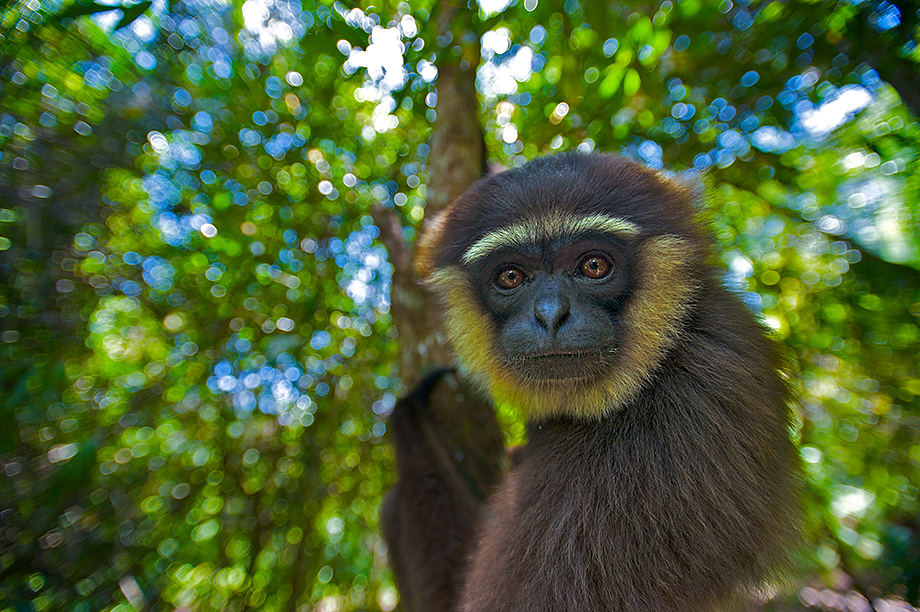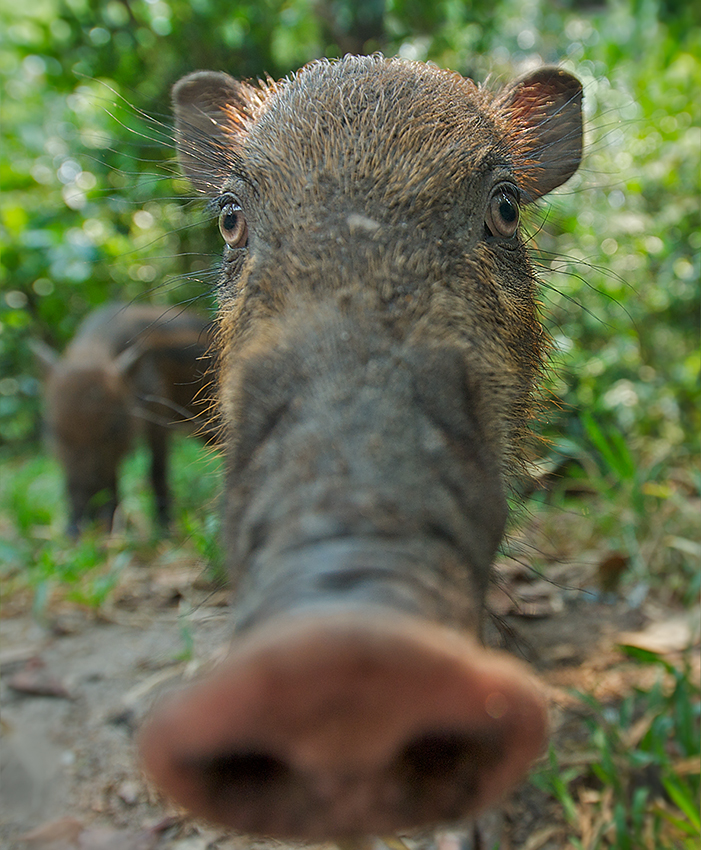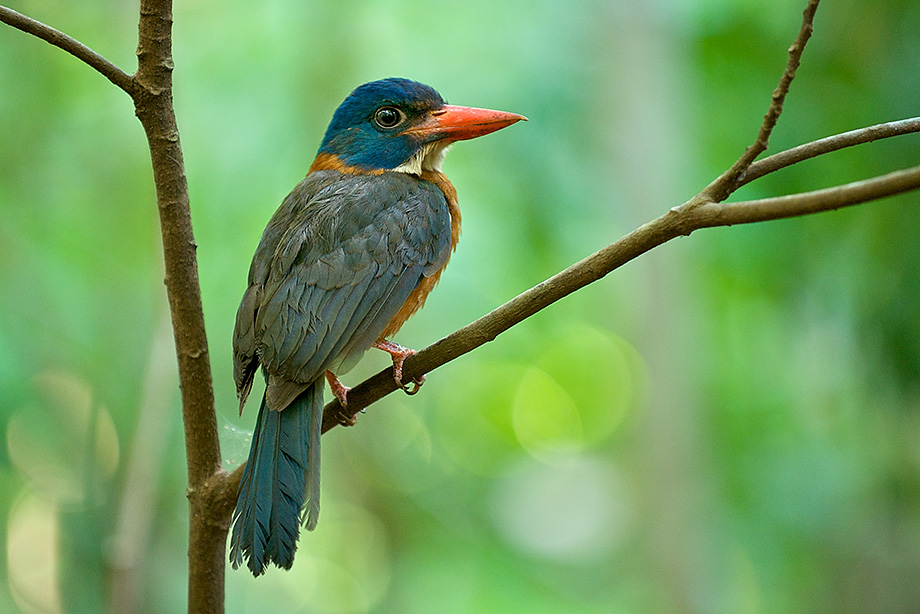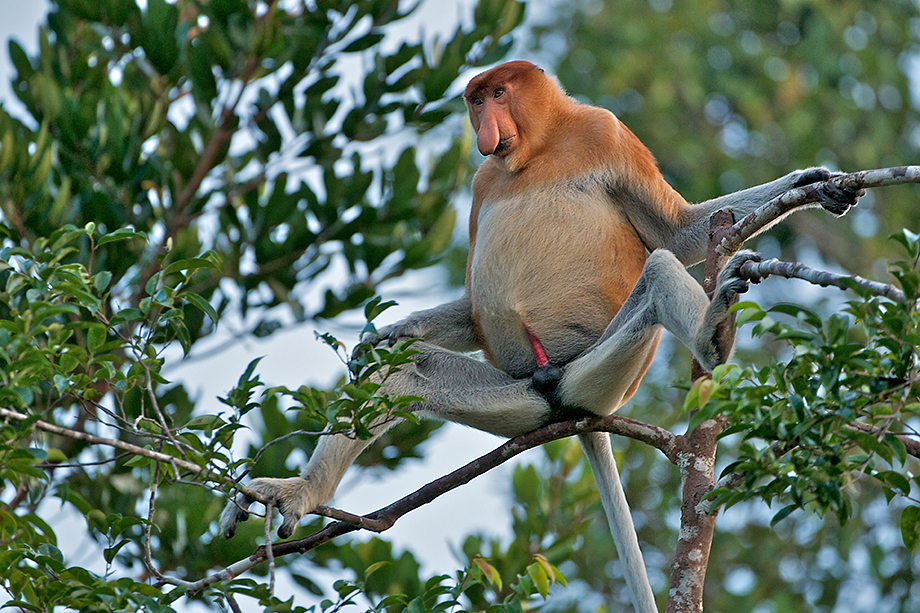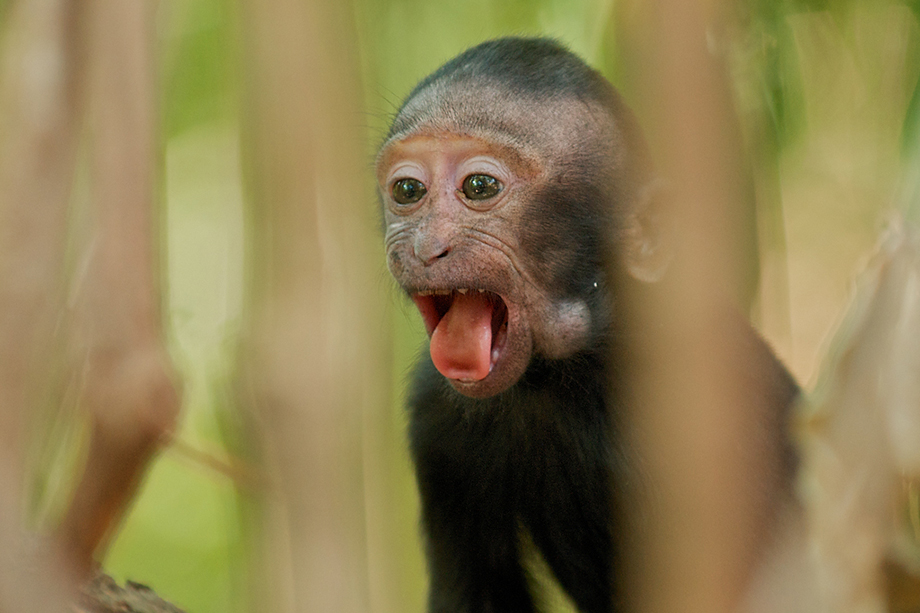Black Crested Macaque (this time an adult)
 On Tuesday, I posted a photo of a baby black crested macaque and commented on the green eyes. This is the adult and as you can see, those eyes eventually turn a bright orange. These monkeys have such amazing faces — very human yet very cartoony at the same time. Here is the link to Tuesday’s post where you can see how much their look changes over the years.
On Tuesday, I posted a photo of a baby black crested macaque and commented on the green eyes. This is the adult and as you can see, those eyes eventually turn a bright orange. These monkeys have such amazing faces — very human yet very cartoony at the same time. Here is the link to Tuesday’s post where you can see how much their look changes over the years.
Nikon D300 with Nikkor 70-200mm lens (at 200mm) ISO 800, f/2.8 at 1/200th of a second
Baby Black Crested Macaque
 I’ve always been a big fan of the primates, but perhaps my favorite monkey is the black crested macaque. I had the pleasure of spending time with a troop of them for two mornings a few years back on my trip to Indonesia. They are considered critically endangered and exist only on the Indonesian island of Sulawesi. This young male was resting in the forest. His green eyes will turn a vivid orange when he becomes an adult.
I’ve always been a big fan of the primates, but perhaps my favorite monkey is the black crested macaque. I had the pleasure of spending time with a troop of them for two mornings a few years back on my trip to Indonesia. They are considered critically endangered and exist only on the Indonesian island of Sulawesi. This young male was resting in the forest. His green eyes will turn a vivid orange when he becomes an adult.
Nikon D300 with Nikkor 70-200mm lens (at 200mm) ISO 1600, f/2.8 at 1/80th of a second
Tarsier Tongue
 Back by popular demand, a baby tarsier. This little hair ball is about the size of a baseball and hails from the island of Sulawesi in Indonesia. I’ve posted quite a few pictures of these guys in the past, but always a good way to start the week.
Back by popular demand, a baby tarsier. This little hair ball is about the size of a baseball and hails from the island of Sulawesi in Indonesia. I’ve posted quite a few pictures of these guys in the past, but always a good way to start the week.
Nikon D300 with Nikkor 200-400mm lens (at 290) ISO 200, f/8 at 1/60th of a second, two Nikon SB-800 flash units
Baby Tarsier

One of my favorite co-workers is leaving our office in New York this week and moving to Chicago. What does that have to do with a baby spectral tarsier? Well, she’s a big fan of the tarsiers and she’s been a big fan of the blog since I started it five years ago, so this one goes out to her. Spectral tarsiers, which live on the island of Sulawesi in Indonesia, are one of the smallest primates in the world. This baby couldn’t have been much bigger than a baseball — most of that size being the head.
Nikon D300 with Nikkor 200-400mm lens (at 220mm) ISO 200, f/8 at 1/60th of a second, Nikon SB-800 flash
Black-Handed Gibbon

Some of you might remember this black-handed gibbon from Borneo, also known as the agile gibbon. He was quite curious — perhaps because he thought that I had something to eat in my camera bag. I was able to get several shots with my wide angle lens. These gibbons live in the same range as the Bornean orangutans in Tanjung Puting National Park. Tomorrow, I’m off to a much different environment — Yellowstone for the weekend for a little winter wildlife photography. It’s been a while since I’ve been there in the dead of winter. Here’s hoping I return on Tuesday with a decent wolf photo or two.
Nikon D700 with Nikkor 17-35mm lens (at 17mm) ISO 800, f/2.8 at 1/500th of a second
Bearded Piglet

When I first saw this group of bearded piglets in Borneo, they ran into the forest to be closer to the safety of their mother. Then, one by one, they crept back toward me, seemingly fascinated with the clicking of my camera. Eventually, this little guy went snout to glass. I posted a similar photo a few years back, but in this one, the young pig is even closer to my wide angle lens. Bearded pigs live amongst orangutans in the rain forest, following closely behind them to forage for their left over scraps of food. They get their name thanks to the impressive beards worn by adults. Here’s a shot of a full grown bearded pig that I previously posted.
Nikon D700 with Nikkor 17-35mm lens (at 17mm) ISO 800, f/4.5 at 1/400th of a second
A Couple of Kingfishers
There are about ninety different species of kingfisher distributed throughout the world. They occur on every continent except for Antarctica. It’s always a pleasure to spot one, usually perched above a body of water, intensely watching for fish below. Here are just two of the brightly colored kingfishers that I’ve seen. The top image, a green-backed kingfisher, was photographed in Indonesia and the bottom, an Amazon kingfisher, was photographed in Brazil.
Top: Nikon D700 with Nikkor 70-200mm lens (at 200) ISO 800, f/2.8 at 1/40th of a second
Bottom: Nikon D300 with Nikkor 200-400mm lens (at 400mm), plus Nikkor 1.4x teleconverter (total of 550mm) ISO 800, f/5.6 at 1/500th of a second
Immodest Proboscis Monkey (Warning, Explicit Material)

Apparently, the art of subtlety is lost on the proboscis monkey. I didn’t stick around long enough to see if this rather forward approach with the ladies of the species resulted in any success. Either way, this one goes out to my friend Garth, who yesterday requested said monkey, no doubt identifying with its equally impressive facial proboscis.
Nikon D300 with Nikkor 200-400mm lens (at 350mm) ISO 800, f/4 at 1/60th of a second
Baby Macaque

I post a lot of black crested macaques. But then again, they are the best monkeys on the planet. This baby was calling out to its mother in the forests of Tangkoko National Park on the island of Sulawesi in Indonesia.
Nikon D300 with Nikkor 70-200mm lens (at 200mm) ISO 800, f/3.5 at 1/125th of a second


